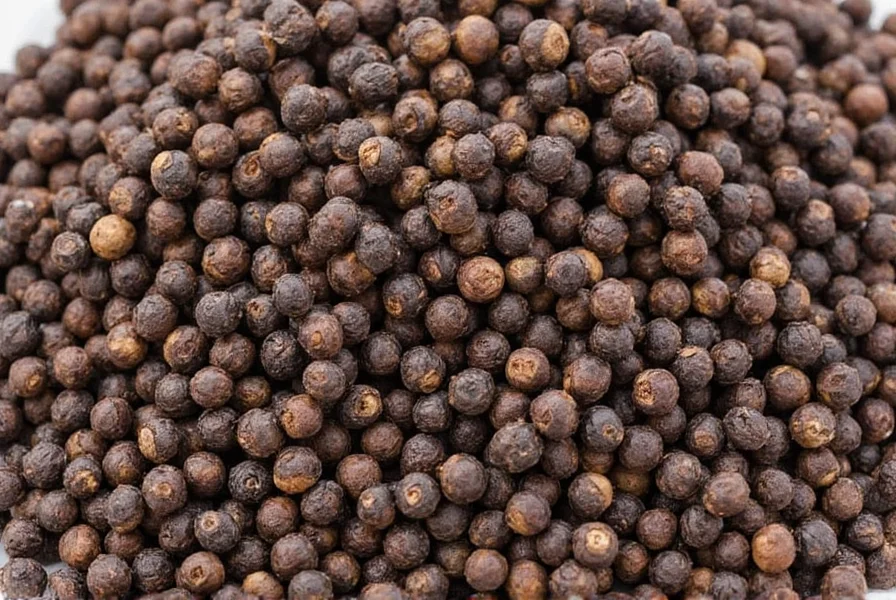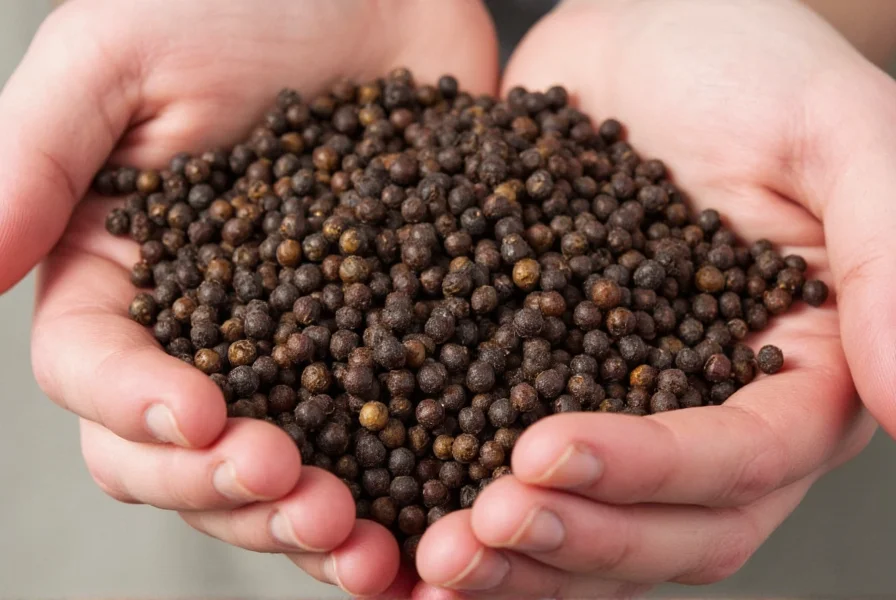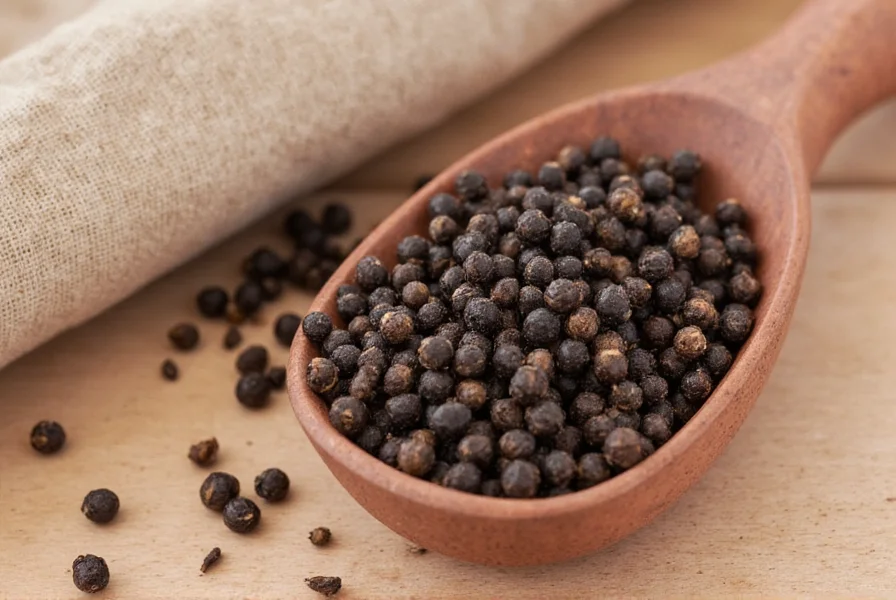For centuries, black pepper has been one of the world's most traded spices, prized for its distinctive heat and versatility in culinary applications. Understanding its botanical origins reveals why this particular spice has maintained its global popularity while other seasonings have come and gone.
The Piper Nigrum Plant: Source of True Pepper
Black pepper comes exclusively from Piper nigrum, a perennial climbing vine belonging to the Piperaceae family. This tropical plant thrives in humid climates with consistent rainfall, growing best in USDA hardiness zones 10-12. The vine produces small flowers that develop into berry-like fruits, each containing a single seed.
Unlike many spices that derive from multiple plant sources, authentic black pepper must come from this specific species. Other 'peppers' like chili peppers (Capsicum family) or pink peppercorns (Schinus molle) are botanically unrelated and produce different chemical compounds responsible for their heat.

From Vine to Spice: The Black Pepper Production Process
The transformation from fresh berry to dried peppercorn involves precise timing and traditional methods that have changed little over centuries:
- Harvesting: Berries are picked when still green but nearly ripe, typically when about one-third of the fruit on a spike has begun to turn red
- Drying: Harvested berries are spread in thin layers and sun-dried for 6-10 days
- Enzymatic Reaction: During drying, enzymes in the outer fruit layer (pericarp) interact with the sun's rays, creating the dark color
- Final Product: The dried berries become wrinkled, dark gray to black peppercorns measuring 4-6mm in diameter
This natural enzymatic browning process—similar to how an apple turns brown when cut—creates piperine, the compound responsible for black pepper's signature heat and pungency. The concentration of piperine typically ranges from 4-9% in dried peppercorns.
Comparing Pepper Varieties From the Same Plant
Interestingly, different processing methods of Piper nigrum berries produce various pepper types:
| Pepper Type | Processing Method | Flavor Profile |
|---|---|---|
| Black Pepper | Unripe berries sun-dried with outer layer intact | Sharp, pungent, complex heat |
| White Pepper | Ripe berries soaked to remove outer layer before drying | Milder, earthier, less complex |
| Green Pepper | Unripe berries preserved through freeze-drying or brining | Fresher, herbal, less heat |
| Red Pepper | Ripe berries dried with outer layer intact | Sweeter, fruitier, moderate heat |
Historical Significance of Black Pepper
Black pepper's journey from Indian forests to global kitchens spans millennia. Ancient Indian texts dating to 500 BCE reference pepper trade, and Roman records show it was valued nearly equally with gold. The spice's importance in medieval Europe earned it the nickname 'black gold' and drove exploration that eventually connected Eastern and Western markets.
Unlike many historical spices whose popularity has waned, black pepper maintains its position as the world's most traded spice, with global production exceeding 500,000 metric tons annually. Vietnam currently leads production, followed by Indonesia, India, and Brazil.

Modern Culinary Applications
Today, black pepper enhances flavors across virtually every cuisine. Professional chefs typically prefer freshly ground pepper over pre-ground versions, as the volatile oils responsible for aroma and heat begin dissipating immediately after grinding.
The compound piperine not only provides heat but also enhances the absorption of other nutrients and compounds—a property increasingly studied for potential health applications. This synergistic effect explains why black pepper often appears in traditional medicinal preparations alongside other botanicals.
Ensuring Quality in Your Black Pepper
When selecting black pepper, look for these quality indicators:
- Uniform dark color with minimal light spots
- Distinctive sharp aroma when crushed
- Heavy weight indicating proper drying (light peppercorns may be old or improperly dried)
- Purchase from reputable sources that specify origin and harvest date
For maximum flavor, store peppercorns in an airtight container away from light and heat, and grind immediately before use. Whole peppercorns maintain their potency for 1-2 years, while pre-ground pepper loses significant flavor within months.
Frequently Asked Questions
Is black pepper made from the same plant as white pepper?
Yes, both black and white pepper come from the Piper nigrum plant. The difference lies in processing: black pepper uses unripe berries dried with their outer layer intact, while white pepper removes this layer before drying ripe berries.
Why does black pepper turn black during processing?
The black color develops during sun-drying through an enzymatic reaction in the berry's outer layer. When exposed to air and sunlight, enzymes cause the green pericarp to darken, creating the characteristic black appearance and developing piperine, the compound responsible for pepper's heat.
Can I grow my own black pepper plant at home?
Yes, but with limitations. Piper nigrum requires tropical conditions (high humidity, consistent warmth, and indirect light) to produce peppercorns. In temperate climates, it can grow as a houseplant but rarely flowers or fruits without specialized greenhouse conditions.
What gives black pepper its spicy heat?
Piperine is the primary compound responsible for black pepper's heat. This alkaloid makes up 4-9% of dried peppercorns and stimulates thermoreceptors, creating the sensation of heat. Unlike capsaicin in chili peppers, piperine produces a sharper, more immediate heat that dissipates faster.
How long have humans been using black pepper as a spice?
Archaeological evidence shows black pepper use dating back to 2000 BCE in India. It became widely traded along ancient spice routes by 1000 BCE, with significant documentation in Roman records from the first century CE. Black pepper has maintained continuous global use for at least 4,000 years.











 浙公网安备
33010002000092号
浙公网安备
33010002000092号 浙B2-20120091-4
浙B2-20120091-4